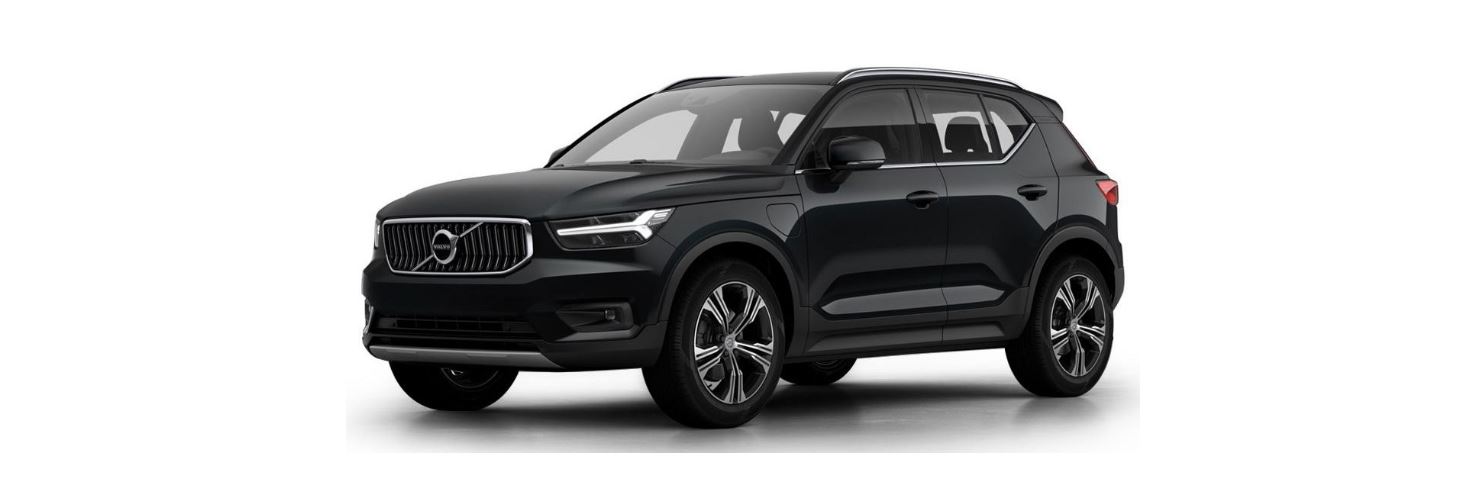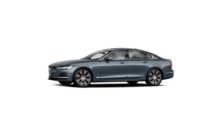Towing a car with a seven-speed gearbox is not permitted. Instead, the car must be transported raised with all the wheels on a recovery vehicle’s platform. Contact a Volvo dealer to determine what applies for your car.
Preparations and towing
Some gearbox variants prevent shifting out of the P position unless the engine is running. Contact an authorized Volvo workshop for assistance when towing, or summon professional help for recovery.
Note that the car must always be towed with the wheels rolling forward.
- Do not tow cars with automatic transmission at speeds higher than 80 km/h (50 mph) or for distances in excess of 80 km (50 miles).
- Towing a car with a seven-speed gearbox is not permitted. Instead, the car must be transported raised with all the wheels on a recovery vehicle’s platform.
- Ignition position II must be active – in ignition position I all airbags are deactivated.
- Always keep the key in the car when it is being towed.
The brake servo and power steering do not work when the engine is switched off – the brake pedal needs to be depressed about 5 times more heavily and the steering is considerably heavier than normal.
- Activate the car’s hazard warning flashers.
- Secure the towline in the towing eye.
- Set the car in ignition position II – press the start button without depressing the brake pedal, and hold the button depressed for approx. 4 seconds. Then release the button.
- Move the gear selector to a neutral position and release the parking brake. If the battery voltage is too low, the parking brake cannot be disengaged. Connect a donor battery if the battery voltage is too low.
- The towing vehicle can now start towing.
- Keep the towline taut when the towing vehicle reduces speed by holding your foot gently pressed on the brake pedal – thereby avoiding unnecessary jerking.
- Be prepared to brake to stop.
Jump starting
Braking on gritted roads
- Brake now and again to remove any layer of salt. Make sure that other road users are not put at risk by the braking.
- Gently depress the brake pedal after finishing driving and before starting your next trip.
Braking on wet roads
Parking on a hill
Always use the parking brake when parking on an inclined surface. Engaging a gear or the automatic transmission’s P position is not sufficient to hold the car stationary in all situations.
If the car is parked facing uphill:
- Turn the wheels away from the kerb.
If the car is parked facing downhill:
- Turn the wheels towards the kerb.
A heavy load, such as a trailer, can cause the car to roll backward when the parking brake is released automatically on a steep incline. Avoid this by pulling the control upwards while driving the car away. Release the control when the engine achieves traction.
Petrol particle filter (Applicable to certain variants)
When driving short distances at low speeds in a petrol car
The capacity of the emissions system is affected by how the car is driven. Driving varying distances and at different speeds is important in order to achieve performance that is as energy-efficient as possible. Driving short distances at low speeds (or in cold climates) frequently, where the engine does not reach normal operating temperature, can lead to problems that can eventually cause a malfunction and trigger a warning message. If the vehicle is mostly driven in city traffic, it is important to regularly drive at higher speeds to allow the emissions system to regenerate.
- The car should be driven on A-roads at speeds in excess of 70 km/h (44 mph) between each refuelling.
Petrol station
Preparations for a long trip
Check that
- the engine is working normally and that fuel consumption is normal
- there are no leaks (fuel, oil or other fluid)
- braking effect on braking works as intended
- the tyres have sufficient tread depth and pressure. Change to winter tyres when driving to areas where there is a risk of snowy or icy road surfaces
- starter battery charging is good
- the wiper blades are in good condition
- a warning triangle and high-visibility vest are located in the car – legally required in certain countries
Overloading the starter battery
- ventilation fan
- headlamps
- windscreen wiper
- audio system
- accessories that are activated in the car.
If the battery level is low, a message is shown in the driver display. The energy-saving function then shuts down certain functions or reduces certain functions such as the ventilation fan and audio system. In which case, charge the starter battery by starting the car and then running it for at least 15 minutes. Starter battery charging is more effective during driving than running at idling speed. If the battery level continues to be low after the measures have been taken, the car should be checked at a workshop – an authorised Volvo workshop is recommended.
High current take-off may lead to low battery level, which temporarily limits the start/stop function. The engine can then be started automatically during a stop to charge the battery.
Driving in water
Observe the following to prevent damage to the car when driving through water:
- The car can be driven through water to a maximum depth of 45 cm (17 inches).
- Do not drive faster than walking pace.
- Do not stop the car in the water. Drive forward carefully or reverse the car back out of the water.
- Extra caution should be exercised when passing through flowing water.
- Do not let the car stand with water over the sills for any long period of time – this could cause electrical malfunctions.
- Engine damage can occur if water enters the air filter.
- If water enters the transmission, it reduces the lubricating ability of the oil, which shortens the service life of related systems.
- Damage to any component, engine, transmission, turbocharger, differential or its internal components caused by flooding, hydrostatic locking or oil shortage, is not covered by the warranty.
- In the event of the engine stalling in water, do not try restart – tow the car from the water to a workshop – an authorised Volvo workshop is recommended. Risk of engine breakdown.
When the water has been passed, depress the brake pedal lightly and check that full brake function is achieved. Water and mud for example can make the brake linings wet resulting in delayed brake function. If necessary, clean the contacts for the electric heater and trailer coupling after driving in water and mud.
Winter driving
Check the following in particular before a cold season:
- The engine coolant must contain 50% glycol. This mixture protects the engine against frost down to approx. -35°C (-31°F). To avoid health risks, different types of glycol must not be mixed.
- The fuel tank must be kept filled to prevent condensation.
- Engine oil viscosity is important. Oils with lower viscosity (thinner oils) facilitate starting in cold weather and also reduce fuel consumption while the engine is cold.
- The condition of the starter battery and charge level must be inspected. Cold weather places great demands on the starter battery and its capacity is reduced by the cold.
- The condition of the battery and its charge level must be inspected. Cold weather places higher demands on the battery and its capacity is reduced by the cold.
- Use washer fluid with antifreeze to avoid ice forming in the washer fluid reservoir.
See the separate section for engine oil recommendations.
Slippery driving conditions
To achieve optimum roadholding Volvo recommends using winter tyres on all wheels if there is a risk of snow or ice.
The use of winter tyres is a legal requirement in certain countries. Studded tyres are not permitted in all countries. Practise driving on slippery surfaces under controlled conditions to learn how the car reacts.
Overheating in the engine and drive system
- In the event of overheating, the engine’s power may be limited temporarily.
- Remove any auxiliary lamps from in front of the grille when driving in hot climates.
- If the temperature in the engine’s cooling system becomes too high then a warning symbol is illuminated and the driver display shows the message Stop safely High engine temperature. Stop the car in a safe way and allow the engine to run at idling speed for several minutes and cool down.
- If the message Turn off engine High engine temperature or Turn off engine Coolant level low is shown, stop the car and switch off the engine.
- A built-in protection function is activated if the transmission overheats. A warning symbol illuminates and the driver display shows the Reduce speed to lower temperature Transmission warm or Stop safely Transmission hot Wait for cooling message. Follow the recommendation given, reduce speed or stop the car in a safe way and allow the engine to run at idling speed for several minutes to enable the gearbox to cool down.
- If the car overheats, the air conditioning may be switched off temporarily.
- Do not turn the engine off immediately you stop after a hard drive.
It is normal for the engine’s cooling fan to operate for a time after the engine has been switched off.
Symbols in the driver display
| Symbol | Specification |
|---|---|
| | High engine temperature. Follow the recommendation given. |
| | Low level, coolant. Follow the recommendation given. |
| | Gearbox hot/overheated/cooled. Follow the recommendation given. |



